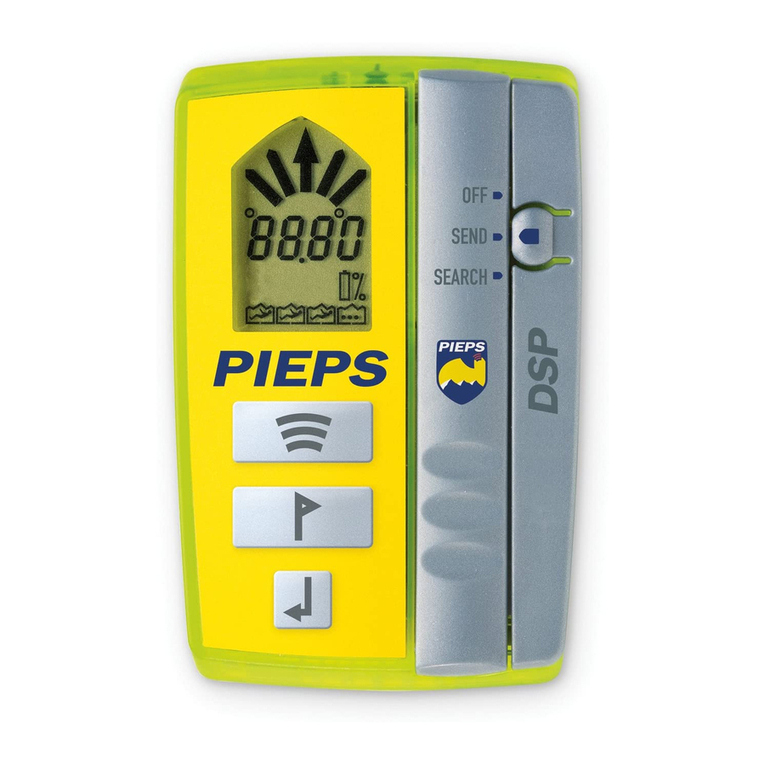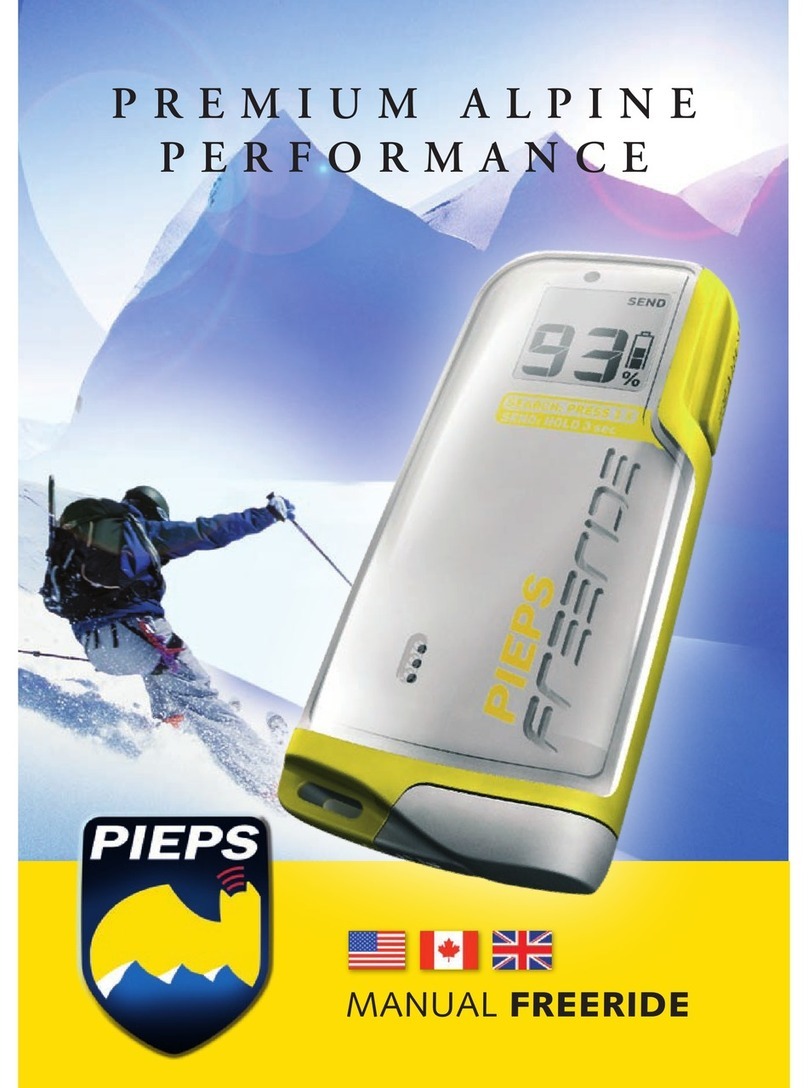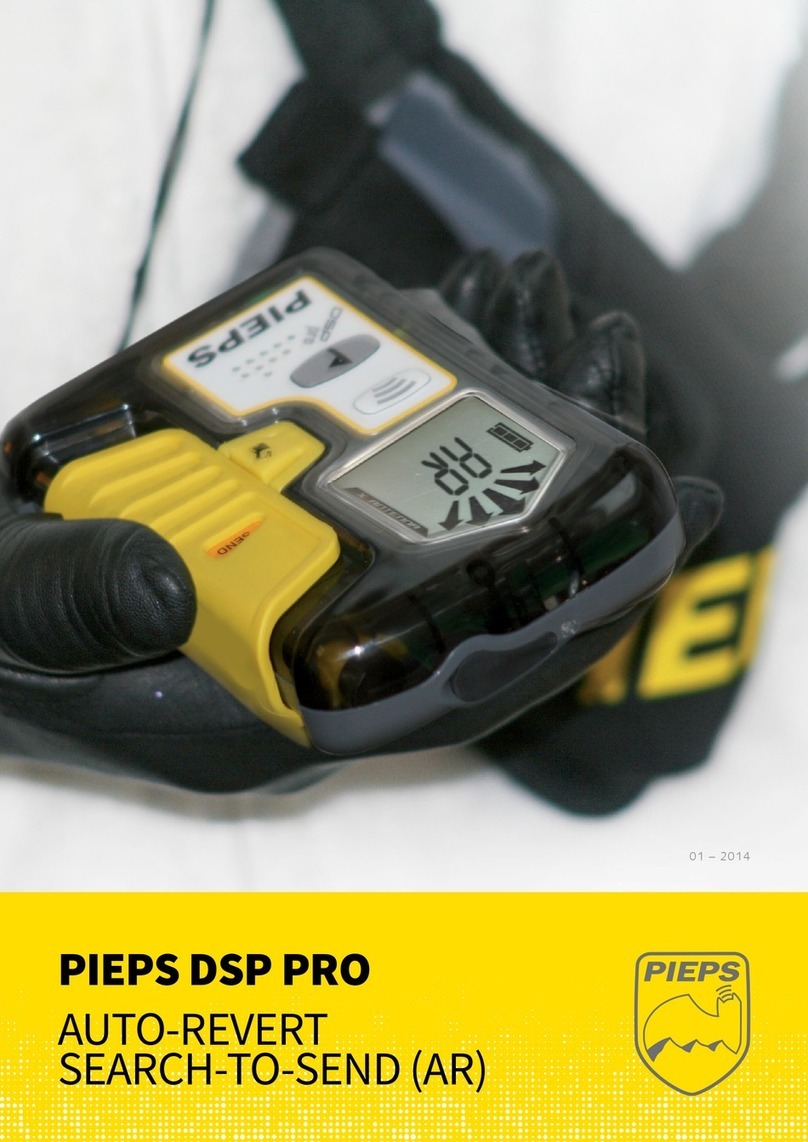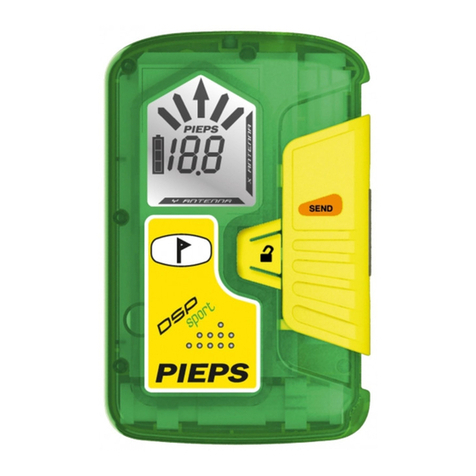
La ricerca multipla, l’assoluta punta di diamante del
PIEPS DSP, si basa su di una separazione del segnale
tramite un processore di segnali digitale (DSP).
Una sepoltura multipla viene visualizzata in modo
inequivocabile con il numero degli “ometti”. Come
standard, il PIEPS DSP ricerca automaticamente il
segnale più forte. Dopo aver localizzato la posizione
del primo sepolto, premere per ca. 3 secondi il tasto
MARK senza allontanarsi da quel punto. Questo
segnale viene ora “interrotto” e l’apparecchio
ricerca ora automaticamente il secondo segnale più
forte. In circostanze sfavorevoli (sovrapposizione
temporanea di segnali), è necessario ripetere tale
procedimento varie volte, oppure si ha la possibilità,
con la funzione SCAN descritta di seguito, di
cancellare interruzioni erronee. In aggiunta può
essere di aiuto, in combinazione con la funzione
SCAN, avvicinarsi ai sepolti partendo da diversi lati
(a stella). Il successo del procedimento del percorso
a croce viene segnalato da una cornice intorno
all’”ometto”. Riprendere ora la ricerca come
prima e ripetere le sequenze nché non siano stati
localizzati tutti i trasmettitori.
IMPORTANTE! In caso di sepolture multiple
in combinazione con apparecchi analogici più
vecchi e in presenza di circostanze sfavorevoli,
possono prodursi dei disturbi che comportano una
limitazione della separazione digitale dei segnali.
In casi simili può vericarsi che per brevi lassi di
tempo vengano visualizzati più segnali di quanti
ce ne siano effettivamente.
MODALITÀ SEARCH / RICERCA MULTIPLA
The optimised multiple search, the absolute
highlight of the PIEPS DSP, is based on a separation
of signals via the digital signal processor (DSP). If
there are multiple burials, this is clearly indicated
by the number of matchstick men. By default,
the PIEPS DSP will automatically search for the
strongest signal. Once the position of the rst
burial has been located, press the MARK key for
approx. 3 seconds without moving away from this
point. This signal is now suppressed and the device
will automatically search for the second strongest
signal. In unfavourable circumstances (temporary
signal interference), you may have to repeat this
procedure several times. It may also be helpful to
approache the victims from several sites (in radial
formation) using the SCAN-function. Once a
signal has been successfully suppressed, an outline
appears around the matchstick man. Now continue
the search as described above and repeat the
procedures until all transmitters are located.
IMPORTANT! In case of multiple burials
involving older analogue devices, faults may at
worst occur which impair the efciency of the
digital signal separation. In such cases, you may
nd for a short time that more signals are displayed
than actually exist.
SEARCH MODE / MULTIPLE SEARCH
08/06
|
17
1
2
3
5
6
8
4
7
1 Visualizzazione 3 sepolti
2 Localizzare 1. sepolto
3 Interrompere con MARK
4 Nuovo segnale, più forte, su display
5 Localizzare 2. sepolto
6 Interrompere con MARK
7 Nuovo segnale, più forte, su display
8 Localizzare 3. sepolto
1 reads three burials
2 locate rst burial
3 suppress with MARK
4 next strongest signal
5 locate second burial
6 suppress with MARK
7 next strongest signal
8 locate third burial

































